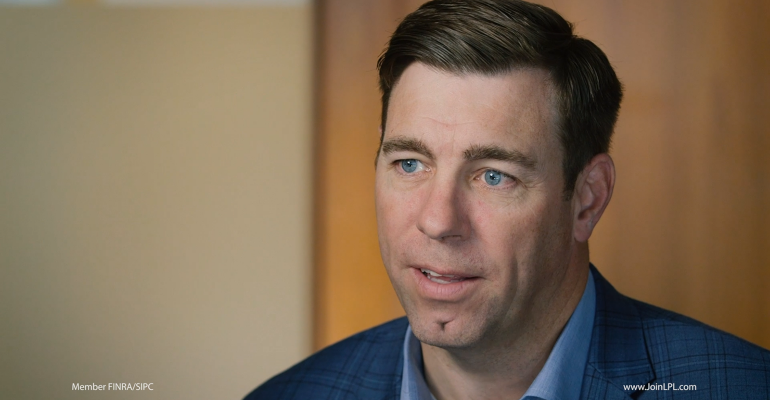(Bloomberg) -- LPL Financial Holdings Inc. Chief Executive Officer Rich Steinmeier took the helm of the wealth-management company in a less-than-traditional manner.
He found out he’d be getting the job just one day before the firm announced, in October, the firing of company veteran Dan Arnold for cause – and without payment of most severance or outstanding equity awards – over still-undisclosed comments he’d made to employees. Steinmeier, then LPL’s chief growth officer, had always wanted to lead a company, but that timeline suddenly became expedited.
“Obviously, it was a crisis transition – we hadn’t been anticipating it,” Steinmeier said in his first interview since taking the role. “I braced for something that was going to be a lot worse than it ended up being.”
After serving temporarily as CEO for several weeks, Steinmeier, 51, was given the position permanently later that month. He said he hadn’t been worried that the role would be too big for him or that he wasn’t ready, but was concerned about the market’s reaction to the news.
Still, he took the job at a healthy time for wealth-management firms, with the assets of the mass affluent swelling with the post-election market surge — and LPL has benefited along with the rest of the industry. The firm’s total net new assets of $157.3 billion for the fourth quarter blew past Wall Street analysts’ estimates of $106.1 billion and net income grew more than 24% from a year earlier to $270.7 million.
“It didn’t turn from a crisis event to a company in crisis,” Steinmeier said.
Before serving as chief growth officer for around six months, Steinmeier was president of LPL’s business strategy and growth division. He previously worked at UBS Group AG and the Merrill Edge independent advisory program, now part of Bank of America Corp. Steinmeier, who grew up in Harrisburg, Pennsylvania, said he bicycled to his first job at Hardee’s and dreamed of working in the automotive industry – even learning Japanese in college to make himself a more competitive candidate — before making the switch to wealth management.
LPL differs from other firms in that the independent-adviser model is core to its business model. According to its most recent quarterly filings, it works with more than 28,800 advisers who are affiliated with the firm or institutions such as Bank of Montreal that work with LPL to deliver wealth-management offerings. Roughly 4,000 of those advisers work with banks, Steinmeier said.
That puts LPL in a different sector from growing, digital-first players favored by younger investors, such as Robinhood Markets Inc., which increasingly rely on artificial intelligence to advise customers. Beyond Robinhood, San Diego-based LPL also competes for clients with Charles Schwab Corp., Morgan Stanley and other firms clamoring to manage the money of millions of Americans. While LPL had total advisory and brokerage assets of $1.74 trillion at the end of 2024, Schwab’s total client assets topped $10 trillion.
Steinmeier said LPL’s original mission was to put the focus on the individual adviser.
“But the firm had gotten away from recognizing that the way you make that adviser the most important person in your company is by making your employees incredibly successful,” he said. “That’s not a reaction to what went on, but that is a point of emphasis that we have elevated as we think about the firm as we continue to progress into the future.”
While LPL says its former CEO violated the company’s code of ethics, LPL flourished under Arnold’s leadership, with brokerage and advisory assets ballooning. Shares of the firm are up 13% this year and quadrupling since the end of 2019. Steinmeier aims to stay on that trajectory.
“We are a growth firm,” he said. “We do not run away from growth. I don’t run away from scale — I run to it.”





